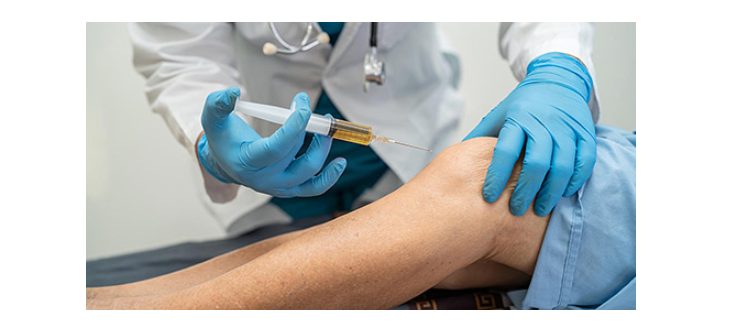By: Geraldus Sigap
Orthopedic conditions such as joint pain, ligament injuries, and tendon issues affect millions of people worldwide, often hindering mobility and overall quality of life. Traditional treatments for these conditions include physical therapy, medication, and, in more severe cases, surgery. However, recent advancements in medical technology have introduced a new approach that harnesses the body’s natural healing power: Platelet-Rich Plasma (PRP) therapy. This minimally invasive treatment is gaining popularity for its effectiveness in promoting recovery and reducing pain, making it a promising option for many orthopedic patients.
PRP therapy is a procedure that involves using a patient’s own blood to accelerate healing in injured tissues. The process begins with drawing a small amount of blood from the patient. This blood is then placed in a centrifuge, where it is spun at high speed to separate the different components. The result is a concentration of platelets, which are rich in growth factors and proteins that promote healing. This concentrated plasma, known as PRP, is then injected directly into the area of injury, such as a joint, tendon, or ligament.

Figure 1. Platelet Rich Plasma Therapy
PRP therapy is used to treat a wide range of orthopedic conditions. It is particularly effective for injuries involving soft tissues like tendons and ligaments, as well as for conditions that affect the joints. Some of the most common orthopedic issues treated with PRP include:
- Tendonitis: Tendonitis is the inflammation of tendons, which are the fibrous tissues that connect muscles to bones. Conditions like tennis elbow, Achilles tendonitis, and rotator cuff injuries are examples where PRP therapy can promote healing and reduce pain.
- Osteoarthritis: PRP therapy has shown promise in managing osteoarthritis, a condition where the protective cartilage in joints wears down over time. By injecting PRP into the affected joint, the therapy can help reduce inflammation and improve joint function, providing relief for patients who experience chronic pain.
- Ligament Injuries: PRP therapy is commonly used in sports medicine for ligament injuries, such as those involving the knee (ACL) or ankle. The growth factors in PRP can accelerate the healing process and strengthen the damaged ligaments, making it a valuable option for athletes or active individuals.
- Chronic Joint Pain: Patients with chronic joint pain, particularly in the knees, shoulders, or hips, may benefit from PRP therapy. The treatment can help regenerate damaged tissue and reduce inflammation, allowing patients to return to their regular activities with less discomfort.
One of the main benefits of PRP therapy is that it is a natural, minimally invasive treatment. Since the PRP is derived from the patient’s own blood, there is a lower risk of allergic reactions or adverse effects. This makes it a safe option for individuals who may not respond well to medications or who wish to avoid surgery.
Another advantage of PRP therapy is its ability to target specific areas of injury. By injecting the concentrated plasma directly into the affected area, doctors can deliver the growth factors exactly where they are needed, maximizing the healing potential. This targeted approach also means that recovery time is often shorter compared to other treatments, and patients can return to their daily activities more quickly.
PRP therapy is also a great option for those who want to avoid or delay surgery. In many cases, PRP can effectively manage pain and promote healing without the need for invasive procedures. For patients with early-stage osteoarthritis or mild to moderate tendon and ligament injuries, PRP can be a valuable alternative to more aggressive treatments, helping them manage their condition with fewer risks.
PRP therapy is typically performed on an outpatient basis, meaning that patients do not need to stay overnight in the hospital. The procedure begins with a simple blood draw, similar to what is done during a routine blood test. The blood is then processed in a centrifuge to separate the platelets, creating the PRP solution.
The doctor will then inject the PRP into the targeted area using a fine needle. In some cases, ultrasound guidance is used to ensure that the injection is placed precisely where it is needed. The entire process usually takes about 30 minutes to an hour, and patients can go home shortly afterward.
After the procedure, patients may experience some mild soreness or swelling at the injection site. This is normal and usually subsides within a few days. Most people can resume their normal activities within a day or two, although doctors may recommend avoiding strenuous exercise for a short period to allow the treated area to heal.

Figure 2. Illustration of the PRP Procedure
While results can vary from person to person, many studies have shown that PRP therapy can be effective in reducing pain and improving function, particularly in patients with orthopedic conditions. For example, research has indicated that PRP therapy can be especially beneficial for knee osteoarthritis, tendon injuries, and certain sports-related injuries.
The number of PRP injections needed to achieve positive results or for patients to feel its therapeutic effects can vary depending on the severity and type of condition being treated. In general, most patients require three to four sessions spaced a few weeks apart to experience optimal results. For some individuals with mild injuries or early-stage arthritis, a single session may be sufficient to stimulate the healing process and reduce pain. However, for more severe or chronic conditions, additional sessions may be necessary to achieve lasting relief and full therapeutic benefits. After the initial series of injections, some patients may opt for maintenance treatments once or twice a year to sustain the positive effects. It is essential for patients to work closely with their doctor to develop a treatment plan that suits their specific needs and ensures the best possible outcome.
However, it is important to note that PRP therapy may not be suitable for everyone. The effectiveness of the treatment depends on various factors, such as the severity of the condition, the patient’s overall health, and the location of the injury. Consulting with a specialist is essential to determine if PRP is the right option for a particular patient.
RS Abdi Waluyo offer a PRP therapy as part of our comprehensive orthopedic care services. Our experienced orthopedic specialists are trained in advanced techniques to ensure that each patient receives the highest level of care. With access to the latest technology and facilities, we are dedicated to providing effective and personalized treatments that help our patients achieve their health goals.
Resources
- Platelet-Rich Plasma (PRP) Injection: How It Works | HSS [Homepage on the Internet]. [cited 2024 Oct 21];Available from: https://www.hss.edu/condition-list_prp-injections.asp
- Columbia Orthopaedic Group [Homepage on the Internet]. Columbia Orthop. Group. [cited 2024 Oct 21];Available from: https://www.columbiaorthogroup.com/
- Platelet-Rich Plasma (PRP) – OrthoInfo – AAOS [Homepage on the Internet]. [cited 2024 Oct 21];Available from: https://www.orthoinfo.org/en/treatment/platelet-rich-plasma-prp/
- Platelet-Rich Plasma (PRP) Injections in Sports [Homepage on the Internet]. Yale Med. [cited 2024 Oct 21];Available from: https://www.yalemedicine.org/conditions/platelet-rich-plasma-injections
